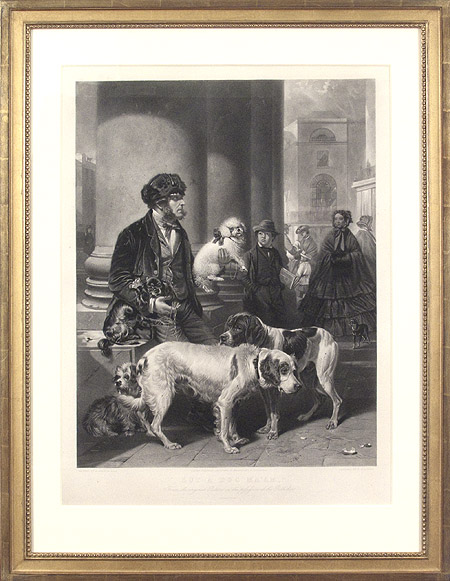
St. Bernard
|
|
The Saint Bernard is another descendant of the ancient Molossus, or Mastiff-like dog brought to Switzerland by the Roman legions. It is probably the best known of the Swiss Mountain Dogs. Although the breed was well known in 1050 when Bernard de Menthon founded the now-famous Hospice in the Swiss Alps as a refuge for travelers crossing the treacherous passes between Italy and Switzerland, historians believe Saint Bernards first appeared at the Hospice in the mid-seventeenth century. It was quickly discovered that these large and powerful dogs were skilled at plowing their way through the deep snow, and that their acute sense of smell made them superlative in locating lost persons. Oliver Goldsmith (1728-1724), for instance, wrote of the Hospice monks that: "They have a breed of noble dogs, whose extraordinary sagacity often enables them to rescue the traveler. Though the perishing man lie ten or even twenty feet beneath the snow, the delicacy of smell with which they can trace him offers a choice of escape." Because of its great skill at finding and saving lost travelers, the Saint Bernard, also known as the Good Samaritan Dog, has been portrayed as the romantic and heroic image of last-minute rescues. These accounts may have been fictional, but colorful stories abound about the breeds life-saving abilities in reaching travelers lost in the snow and escorting them back to the Hospice. The most famous tale concerns the dog "Barry," who served at the Hospice early in the nineteenth century. He is credited with saving forty-one lives, including that of an unconscious child trapped on an icy ledge. While many of these stories may be fictional, it is a fact that during the three centuries that Saint Bernards have been employed for rescue work at the Hospice, it is estimated that they have helped to save over 2,000 lives. The breed club was formed in London in 1880; in 1865 the breed was officially named the St. Bernard, and in 1887 at the International Congress in Zurich, Switzerland, a breed standard was drafted which was accepted internationally. |
Home | About
the WS Gallery | Current
Exhibition | New
Additions | Search Our Inventory
| Commissioning Paintings | 19th
& 20th Century Oils | Contemporary
Artists | Works
on Paper & Collectibles | Books
| Christine Merrill
| Guest book | Email
Us
All images, designs and information on this site
are fully copyrighted © 1999
and may not be reproduced of used in any form or any manner, or displayed in
any way
on any website without the express written consent of The William Secord Gallery,
Inc.
William Secord Gallery, Inc.
29 West 15th Street 4th floor
New York, NY 10011
Between Fifth and Six Avenues
www.dogpainting.com
wsecord@dogpainting.com
Tel. 212-249-0075
212-249-0896
By appointment
